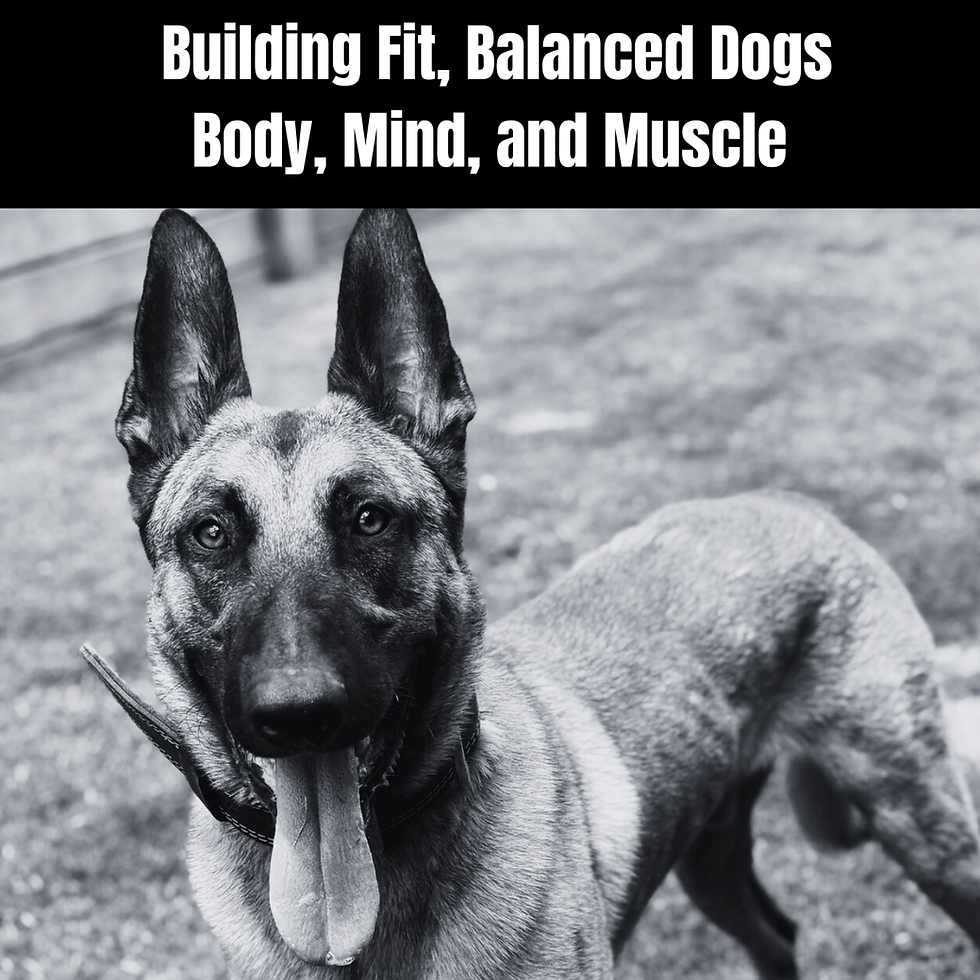Overweight Dogs in Australia: Why Exercise is the Missing Puzzle Piece
- Daniel Rose

- Jul 22
- 2 min read
Did you know over 56% of pet dogs in Australia are considered overweight or obese? That’s more than 1 in 2 dogs walking around with extra weight—putting their health, happiness, and even their behaviour at risk.
If you're noticing your dog is looking a little rounder or acting out more than usual, it might be time to take a closer look at their fitness routine (or lack thereof).
📊 The Stats Don’t Lie: Pet Obesity is on the Rise
56% of dogs are overweight or obese in Australia (PetSure, 2022)
Obesity is linked to reduced lifespan (by up to 2.5 years!)
Joint issues, heart disease, diabetes, and heat intolerance are all associated with excess weight
Many overweight dogs show signs of frustration, boredom, and behavioural issues
These numbers are alarming, but here’s the good news: you can turn it around with simple, consistent changes.
💪 Why Exercise is About More Than Just Weight Loss
While exercise helps your dog shed kilos, the benefits go well beyond the waistline:
✅ 1. Improved Behaviour
A tired dog is a good dog. Dogs with pent-up energy often show unwanted behaviours like:
Barking excessively
Digging
Destructive chewing
Escaping or attention-seeking
Regular exercise helps burn off excess energy, decreasing these behaviours and boosting your dog’s mental health.
✅ 2. Stronger Joints and Muscles
Extra weight puts strain on your dog’s joints. Low-impact activities like walking, hydrotherapy, or using a slat mill can help strengthen muscles and protect joints without causing damage.
✅ 3. Better Mood and Focus
Physical activity releases feel-good endorphins, reducing anxiety and improving your dog’s ability to focus during training. Many reactive or anxious dogs benefit greatly from structured exercise.
✅ 4. Stronger Bond
Training walks, structured play, and fitness games improve your relationship with your dog. You’re working together, communicating, and building trust.
🐾 Getting Started: What Counts as “Exercise”?
Not all exercise is equal—playing fetch in the backyard is great, but a structured fitness plan is better. Options include:
Daily walks or hikes
Slat mill or treadmill training
Agility or scent detection games
Resistance work (drag work or weight pulls)
Group fitness challenges (like our Flip the Fit Switch challenge!)
Even 20–30 minutes a day can make a massive difference to your dog’s physical and mental wellbeing.
❤️ Don’t Wait — Start Moving Today
If your dog is overweight, easily bored, reactive, or just plain zoomy at home—exercise is your secret weapon. Combined with good nutrition and mental stimulation, a regular fitness routine will help your dog live longer, behave better, and feel happier.
Ready to help your dog flip the fit switch? 📩 Contact Dogs & Deadlifts today and let's build a better, healthier dog—together.




Comments